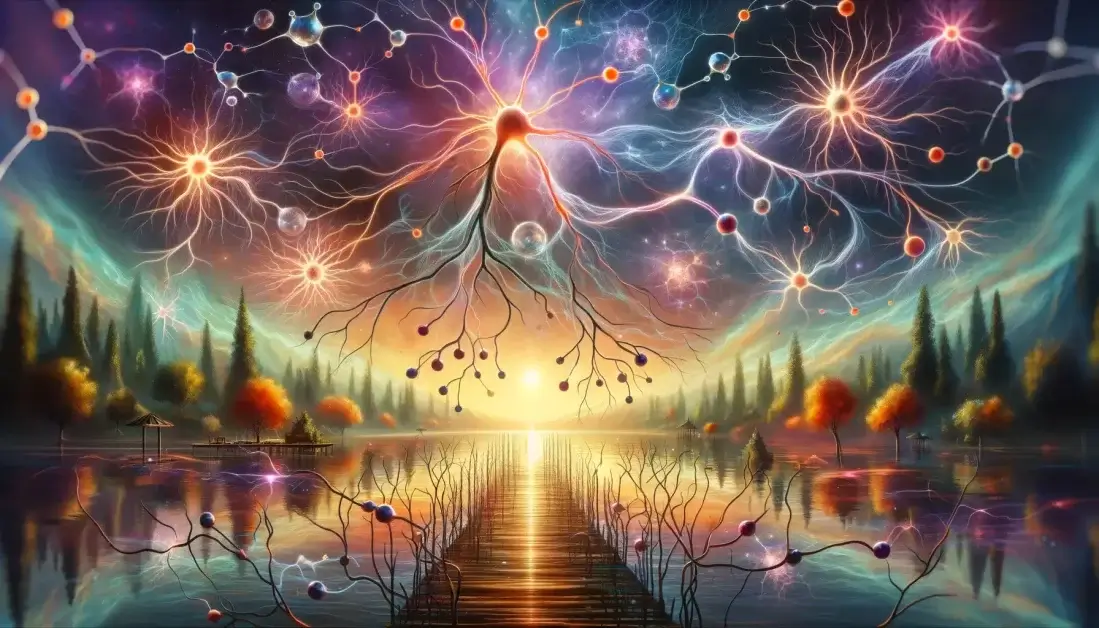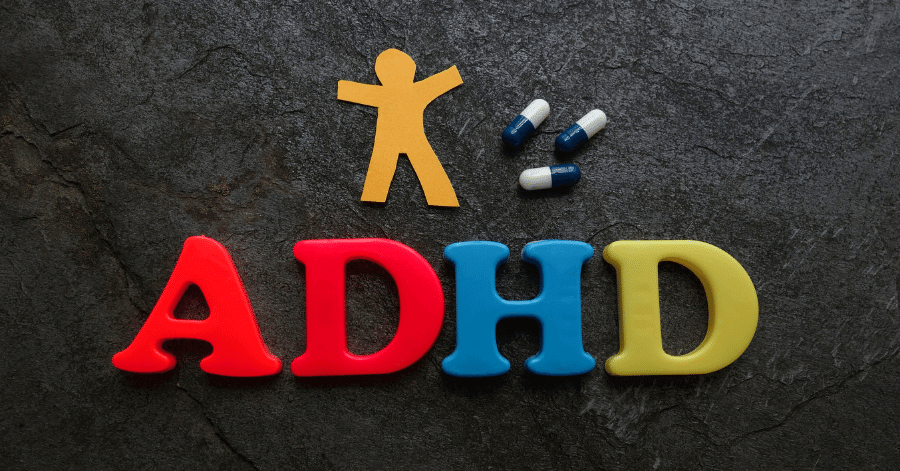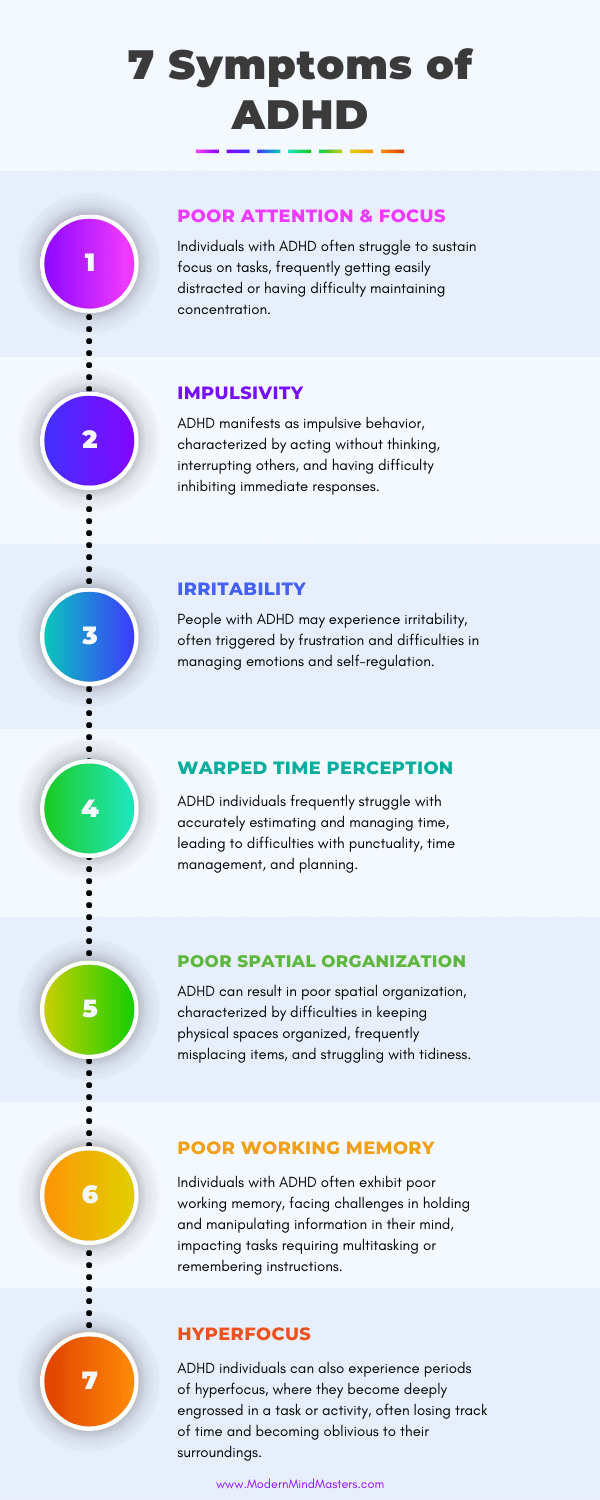
What is GABA: Functions, Benefits, and Effects
GABA is the primary inhibitory neurotransmitter in the brain, preventing over-excitement of neurons to play a critical role in managing anxiety, stress, and sleep.

For many, ADHD can feel like trying to juggle a dozen balls while riding a unicycle through a maze. Unfortunately, treating it is no simpler either; with dozens of treatments for ADHD available, from prescription stimulants to natural supplements, picking the best option can feel like picking a needle in a haystack.
Jokes aside, the problem is severe; although rates vary across the world, an estimated 8.4% of children and 4.4% of adults have ADHD, making it one of the most common childhood disorders and subject to much scientific inquiry.
This article will help bring a ray of light to this otherwise dark and confusing field. By understanding the neurobiology behind ADHD, we can better determine which treatments are most appropriate based on individual conditions.
Remember that all treatments, no matter how minor, should be discussed with a qualified medical professional. What works for one person may not work for another, and finding the right one may require a lot of trial and error.
So without further ado, let’s dive into the causes and symptoms of ADHD and five potential types of treatment that may help relieve its symptoms.
ADHD, or Attention Deficit Hyperactivity Disorder, is a neurodevelopmental condition that impacts individuals of all ages, but more so in children and young adults between the ages of 5 and 17.
ADHD is commonly associated with inattention, impulsivity, and hyperactivity, which often disrupt daily functioning and overall well-being.
The symptoms of ADHD vary widely and affect functioning in different ways. While someone with multiple but mild symptoms might be able to perform perfectly well with just a few tools, another person experiencing just one intense symptom might struggle more.
As such, no exact list of symptoms can explicitly diagnose someone with ADHD. Instead, medical diagnoses for ADHD are based on the criteria outlined in the DSM-5, where patterns of inattention and/or hyperactivity that significantly interfere with functioning are monitored over a minimum of six months.
Symptoms of inattention and hyperactivity may manifest as an inability to focus, poor attention, impulsivity, irritability, challenges with time and space perception, poor working memory, and rejection-sensitive dysphoria (RSD).

ADHD is a complex neurodevelopmental disorder with symptoms and causes that are still not fully understood. Neurological imaging techniques, however, have provided insights into the brain circuits involved in ADHD, specifically the Default Mode Network (DMN) and Task-Positive Networks (TPN).
The DMN is active when the mind is not focused on a specific task, allowing for daydreaming, introspection, and creative thinking. The TPN, on the other hand, is engaged during goal-oriented tasks requiring attention and concentration.
In a typical brain, these networks alternate, with one active while the other is quiet. Mediation, for example, activates the DMN while reducing activity in the TPN, resulting in a feeling of calm and introspection that arises from successful meditation.
In individuals with ADHD, both the DMN and TPN have been shown to activate simultaneously. Contrary to the misconception that those with ADHD are lazy, the firing of both neural networks in the brains of individuals with ADHD demonstrates overactivation of neural circuits, indicating that their brains are working too hard!
Underlying the desynchronization of these networks is dopamine, a neurotransmitter crucial for motivation, reinforcement, and reward. Insufficient dopamine levels in specific brain circuits result in neurons firing unnecessarily, including those unrelated to the task at hand.
Imagine trying to meditate while your brain is stuck in the “get it done” zone; when one half of your brain is trying to relax, the other wants to get busy. It’s like pressing the brake and accelerator pedals of your car at the same time.
Being one of the most common neurodevelopmental disorders in children, there has been much scientific inquiry into treatments that might help remedy its symptoms. As with all medical treatments, you should discuss options with a qualified medical professional, as what works for some might not work for others.
There are a variety of prescription drugs used to suppress the causes of ADHD, the most common of being Ritalin and Adderall.
Most of these drugs act as stimulants, where they target specific neuromodulators such as dopamine, serotonin, norepinephrine, and acetylcholine, chemicals that are suspected to disrupt the neural circuits in the brain responsible for perception and attention.
Most of these prescription drugs work by raising dopamine levels, particularly in the networks that control task-related behaviors such as the DMN and TPN. They also aim to increase adrenaline which increases motivation, drive, focus, and energy when combined with dopamine.
Surprisingly, most prescription drugs are very close in form to many illicit drugs known to be potent stimulants, such as amphetamine and methamphetamine.
While recreational drugs such as these are addictive and damaging when controlled at an appropriate dosage and under the correct application, they have been shown to have beneficial uses for those with ADHD.
Ritalin, a brand name for the medication methylphenidate, is a central nervous system (CNS) stimulant and was one of the first drugs prescribed for ADHD. Its most notable effects are to help improve focus, reduce impulsivity, and control hyperactivity.
Ritalin is available in different forms, including immediate-release tablets and extended-release capsules. The choice of formulation depends on individual needs and the duration of symptom control required (which can differ widely), highlighting the importance of seeking qualified medical advice.
Unfortunately, many young adults are now taking Ritalin without a prescription, particularly students preparing for exams (Ritalin is colloquially known as “steroids for SATs”). In fact, non-prescribed usage is now higher than Cannabis among young adults, creating fears of adverse reactions and addiction in those without ADHD.
Adderall is a prescription medication that contains amphetamine salts (a mix of amphetamine compounds). While similar in structure to Ritalin, it differs in its application.
Adderall is more typically prescribed as the dominant drug treatment for ADHD as it is easier to control a patient’s level of focus. Whereas Ritalin often makes people too alert for too long of a period, Adderall has proven to be easier to manage.
Similar to Ritalin, 25-30% of those between the ages of 17-30 admit to taking Adderall without a prescription to work, study, and generally better focus in their daily lives, further raising concerns about long-term safety in those without ADHD.
Modafinil is a non-amphetamine central nervous system (CNS) stimulant typically used to promote wakefulness and alertness. It is commonly taken by those trying to stay awake for long periods, such as military personnel, night-shift workers, and first responders.
Armodafinil, a more refined version of modafinil, is also gaining popularity as a treatment for ADHD and is significantly less expensive. Its 8-10 hours of effect is also less than the 12-15 hours for modafinil.
While modafinil and armodafinil have both shown efficacy in reducing symptoms of ADHD, the bulk of clinical research has focused on modafinil and its effectiveness in improving attention and reducing impulsivity.
Armodafinil, while not as extensively studied for ADHD, may still offer similar benefits based on its pharmacological similarities to modafinil.

Almost everyone relies on the power of a good cup of coffee to boost attention and focus. Because caffeine achieves this through increasing dopamine, it is fair to wonder if caffeine can act as a natural stimulant for offsetting the effects of ADHD.
This study performed on military personnel suggests that caffeine and caffeinated beverages might have potential benefits in managing some ADHD symptoms in adults with ADHD, at least in the short term, with some patients experiencing better focus and improvements in cognition.
It’s important to note, however, that caffeine is not a recommended or approved treatment for ADHD as its effects can vary widely, and the benefits can be inconsistent. Caffeine is also known to have negative effects in high quantities, including increased heart rate, jitteriness, anxiety, and sleep disturbances, and should therefore be discussed with a professional for its use with ADHD.
Despite its controversy, cannabis has been suggested as a potential aid for ADHD because of its dopamine-spiking and stimulant properties.
A small sample study on just three males (18, 22, and 23) indicated that all three patients reported subjective improvements in ADHD symptoms and an overall increase in their quality of life after integrating cannabis into their treatment regimens.
Health Questionnaire (PHQ-9), which measures depression, improved by 30-81%, and the Screen for Child Anxiety Related Emotional Disorders (SCARED), which measures anxiety, improved by up to 33%.
Additionally, improvements in emotional regulation ranged from 22-78%, and inattention showed improvements of 7-30%.
Mild adverse effects were also experienced, however, such as short-term memory problems, dry mouth, and sleepiness. While cannabis has been shown to increase dopamine transmission in the brain, it also creates an alert but mellow feel due to the relaxing effects on some systems in the brain, such as serotonin.
While cannabis may be able to increase focus in some scenarios, its other effects, notably on memory, can reverse these benefits. Ultimately, scientific evidence regarding its effectiveness and safety for ADHD is limited and inconclusive.
Further exploration of the effect of cannabis on ADHD may show more beneficial effects on ADHD in the future, but due to its potent secondary effects on other systems, other forms of ADHD treatment will likely remain more suitable.

While stimulants, both prescription, and non-prescription, can have a significant impact on ADHD symptoms by increasing dopamine levels, they are also accompanied by side effects that, when not properly controlled, can offset their benefits.
Such longer-term side effects include a propensity for substance abuse and addiction, of which dopamine can be a significant cause. Other side effects include reduced sexual performance (they can increase libido but make it difficult for a male to get an erection) and cardiac issues due to vasoconstriction effects.
Because of the way dopamine works, with each successful hit of the drug, the brain craves more and higher quantities are needed to achieve the same sense of euphoria, which quickly leads to addiction. As a result, many are exploring natural non-stimulating compounds to avoid these detrimental effects.
Alpha GPC (alpha-glycerophosphocholine) is a natural choline compound commonly used as a dietary supplement. It boosts acetylcholine, another neurotransmitter that acts at the neuron-to-muscle connection and generates muscular contractions.
Compounds that increase cholinergic transmission (i.e. increase acetylcholine) have been shown to improve focus and cognition. One such cholinergic compound, Alpha GPC, has been shown to boost such traits in doses as high as 1200 mg daily (typically 400 mg single dosages spread throughout the day).
Omega-3 fatty acids, a type of polyunsaturated fat, have long been known to have many health benefits, and research now suggests they could play a role in modulating the effects of ADHD.
One particular type of Omega-3 fatty acid, docosahexaenoic acid (DHA), has been found to be beneficial for improving attentional effects. Found in high concentrations in the cell membranes of neurons, DHA is involved in promoting proper brain development and function, especially during fetal development and early childhood.
This study showed that 300 mg of DHAs tends to be the threshold for improving attention, with higher limits of around 2000 mg also shown to improve mood and help with the effects of anxiety and depression.
Phosphatidylserine, a naturally occurring phospholipid found in high concentrations in the brain, has also been shown to improve the effects of ADHD in children (not tested on adults) when taken at 200 mg per day for two months.
Interestingly, this effect was greatly enhanced by the presence of omega-3 acids, suggesting it has a compounding synergistic effect.
Note, however, that these effects (like almost all supplements) only help modulate the effects of ADHD and, as such, are only supplemental. But they may help take the edge off some of the more mild symptoms.

If drugs and supplements aren’t your thing, or you have been advised by a medical professional that they might not be suitable for you, there is still hope; small modifications to diet have been shown to induce mild benefits for symptoms of ADHD.
A landmark study was published in 2011 in the Lancet Journal, setting the ADHD field on fire by suggesting that diet, without drugs, could help alleviate ADHD symptoms.
Certain foods have long been known to increase dopamine, especially sugar. It has also been shown that children (and adults) with ADHD tend to pursue sugary foods to a larger degree than those without ADHD, likely as a subconscious craving to improve their impulsivity and lack of focus.
Elimination diets have also been tested, where certain foods are eliminated to see their effects, if any, on health and function.
One such diet is the oligoantigenic diet, a dietary approach that involves temporarily removing certain foods from the diet that are considered potential allergens or triggers for adverse reactions.
This study showed a significant reduction in ADHD symptoms immediately after a four-week oligoantigenic treatment, where the “responder rate”, defined as a 40% decrease in ADHD Rating Scale (ARS) total value, was about 64% after four weeks of the diet. Other studies have reported similar response rates, ranging from 60% to 73%.
The study found that eliminating foods that children have mild allergies to can dramatically improve their ADHD symptoms. It seemed as if eliminating simple sugars was the most dramatic factor.
There are a notable number of critics of this sort of diet, however. Opponents suggest that the structure of such experiments has so far been poor and that when children are not exposed to certain foods, such as nuts and seeds, they can later develop allergies to them.
While the verdict is still out on oligoantigenic diets, abundant evidence has shown that avoiding high-sugar diets (those containing simple sugar foods) is beneficial for many health aspects, and potentially for ADHD.
Like all natural supplements, it is important to note that diet does not mediate ADHD – it only indirectly modulates it. You will never solve ADHD with diet alone, but it might help offset and soften some of its symptoms.
Sounding like something out of a Star Trek movie, transcranial magnetic stimulation (TMS) has been gaining popularity as a treatment for all kinds of neurological conditions, including ADHD.
TMS is a non-invasive tool, meaning it is placed on top of the body (skull) without having to be ingested or consumed like most other treatments.
A metal coil is placed over particular parts of the brain (depending on what is to be stimulated), and magnetic stimulation is sent into the brain, either lowering or increasing the amount of activity in the targeted brain areas.
Since ADHD is thought to occur because of overactive neural circuits, the idea is that TMS can either reduce or increase activity in these parts to operate more like a brain that is unaffected by ADHD.
Early experiments have shown success in stimulating certain parts of the brain that control the impulse to move without making a conscious decision to do so. Instead of your brain telling your arm to move, for example, the same “thought” can be stimulated into your arm, bypassing conscious thought and the brain altogether.
For those with ADHD, the aim is to use TMS to stimulate portions of the prefrontal cortex that engage task-directed focused states. Yes, it might one day be possible to make yourself focused and productive without having to fight your own brain!
Researchers are also combining this technology with task-focused learning, literally teaching the brain how to focus in a non-invasive and drug-free manner.
For now, unfortunately, the technology is still in the early stages; early tests have proved difficult to deliver magnetic stimulation accurately to the correct parts of the brain. But with time and experience, it is hopeful that this technology may help improve one’s ability to focus and function productively without the use of drugs, not only for those with ADHD but for everyone.

Navigating the world of ADHD treatments can sometimes feel like a Vegas buffet – lots of prescription and non-prescription dishes in a gambling environment. The potency of some of these drugs, however, can create side effects that negate all benefits when not correctly administered and tuned to each individual.
For those seeking a more natural approach, omega-3 fatty acids, DHAs, and phosphatidylserine may have a mild supplemental effect. While they are unlikely to invoke drastic change, they may help take the edge off some of the more mild symptoms.
Non-invasive approaches, such as low sugar and oligoantigenic diets and transcranial magnetic stimulation, may one day prove to be highly effective in treating ADHD. While still in the early stages of research, time will tell whether these techniques might help to reduce the dependence on more potent drugs.
Finding the best ADHD treatment can be a bit of a wild ride, full of twists, turns, and surprises. What works for one person may not work for another, and sometimes the journey involves a little trial and error.
So, whether you’re reaching for the prescription pill bottle, stocking up on fish oil, or getting ready for a magnetic brain makeover, remember to consult with the wise sages of the medical world to guide you through this adventurous quest of ADHD management. With a little humor and a lot of patience, you’ll be better equipped to tackle the challenges and seize the opportunities that ADHD brings!

GABA is the primary inhibitory neurotransmitter in the brain, preventing over-excitement of neurons to play a critical role in managing anxiety, stress, and sleep.

There are 3 rules for intermittent fasting for weight loss and health benefits that must be followed to extract benefits such as organ health and enhanced cellular repair.

Treatments for ADHD include prescription medication, natural stimulants, natural non-stimulants, and non-invasive techniques. The best course of action, however, depends on the individual.

Discover how to stop overthinking in 5 practical steps: embrace uncertainty, limit decision-making time, and focus on actionable steps.
Social media can be highly addictive in nature due to its proclivity for likes, comments, and followers, all of which engage our dopaminergic systems.

Retirement will come sooner than you imagine. Learn why building retirement savings is vital and how much you need to start saving today.
© 2025 Modern Mind Masters - All Rights Reserved
You’ll Learn:
Effective Immediately: 5 Powerful Changes Now, To Improve Your Life Tomorrow.
Click the purple button and we’ll email you your free copy.